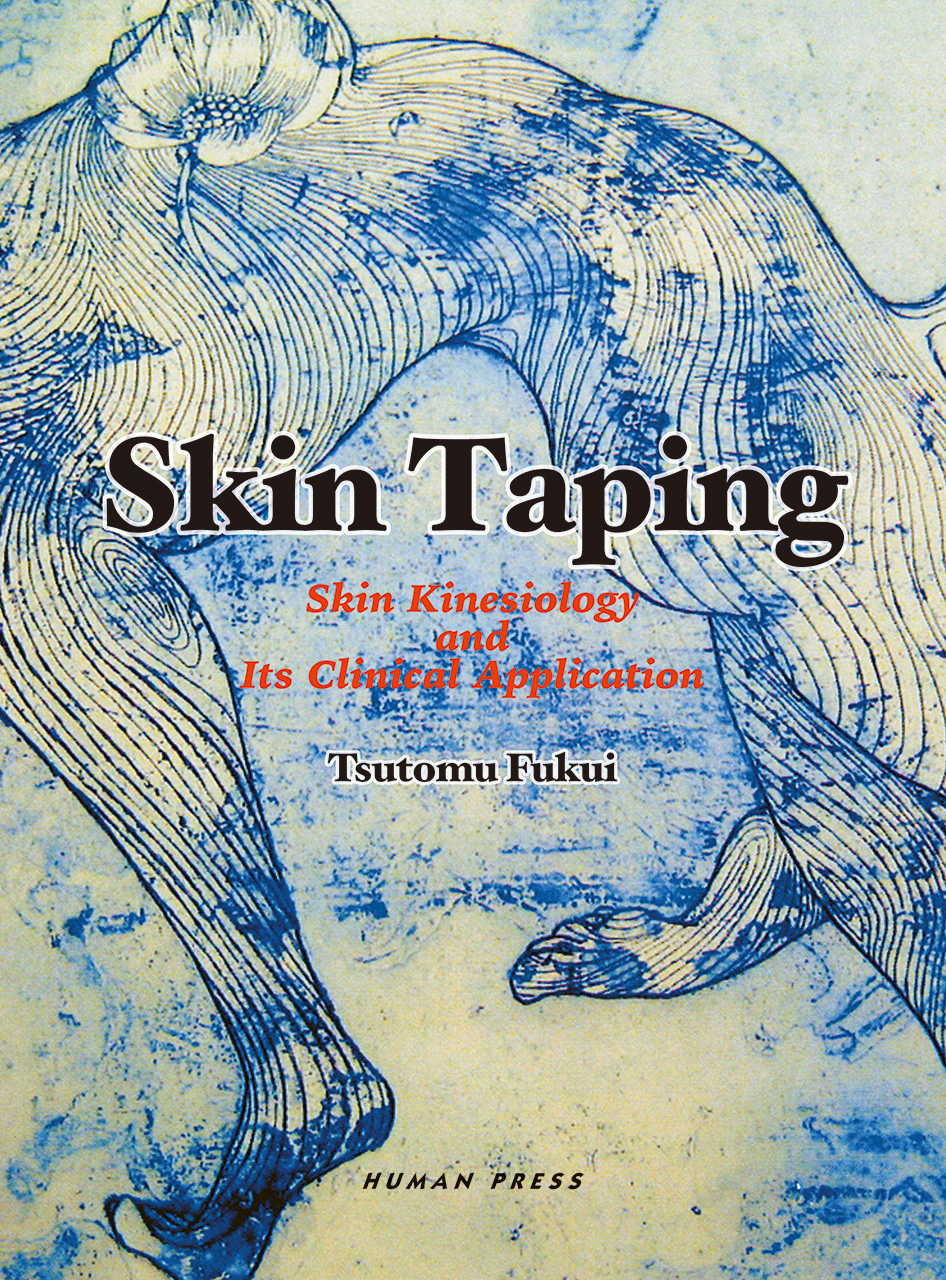Skin Taping

- Author
- :Tsutomu Fukui
- 212 pages
- 10.1 x 7.5 x 0.7 inches Full Color
- ISBN13
- :978-4-908933-00-4
- Price
- :JPY6,000- + tax
Product Description
Knowledge for skin movement and useful techniques of the skin taping for the clinical practice
Guiding skin to the direction of where it moves during the movement is effective for the improvement of pain or decreasing of muscle tone. This book contains full of the knowledge for skin movement and useful techniques of the skin taping for the clinical practice. Skin taping is effective for increasing and limiting range of motion (ROM), facilitating and inhibiting muscle activity, postural control or gait control, and is applicable for the diseases such as lumber disk herniation, lumber spondylolysis, scapulohumeral periarthritis, thoracic outlet syndrome, humeral lateral epicondylitis, hip osteoarthritis, knee osteoarthritis, iliotibial band friction syndrome, pes anserius tendonitis, patellar tendonitis, or Achilles tendonitis.
Clear pictures and instructions of each technique allow you to understand and follow the information provided in this book.
The table of contents
- 1. Skin structure and Skin function
- (1) Skin function
- (2) Skin structure
- (3) Cristae cutis, sulci cutis
- (4) Skin tension lines
- 2. Characteristics of skin movement
- 3. The rules of skin movement
- 4. Principles of skin taping method
- (1) Principle of guiding skin creases
- (2) Principle of guiding surface prominences
- (3) Principle of guiding skin tension lines during rotation
- (4) Principle of muscle facilitation and inhibition
- 5. Objectives of skin taping
- (1) Increasing or limiting ROM
- (2) Facilitation and inhibition muscle activity
- (3) Postural control
- (4) Gait and movement control
- (5) Stabilizing joints
- (6) Pain relief
- 6. How to tape
- (1) Notes before taping
- (2) Taping method
- (3) Clinical tape application
- 7. Taping types
- 8. Important remarks
- 1. Spine
- (1) Cervical spine
- (2) Thoracic spine
- (3) Lumber spine
- 2. Upper extremity
- (1) Shoulder joint
- (2) Sternoclavicular joint and acromioclavicular joint
- (3) Elbow joint
- (4) Forearm
- (5) Wrist joint
- 3. Lower limb
- (1) Hip joint
- (2) Knee joint
- (3) Ankle joint (talocrural joint)
- (4) Subtalar joint
- (5) Metatarsophalangeal joint, interphalangeal joint
- 1. Typical muscles needing facilitation of muscle activity
- (1) Lower fibers of trapezius
- (2) Rhomboids
- (3) Transverse abdominal muscle
- (4) Hip flexior
- (5) Gluteus maximus
- (6) Gluteus medius
- (7) Vastus medialis
- (8) Hamstrings
- (9) Tibialis anterior
- 2. Typical muscles needing inhibition of muscle activity
- (1) Pectoralis major muscle
- (2) Pectoralis minor
- (3) Long head of biceps brachii
- (4) Tensor fasciae latae
- 1. Spinal control
- (1) Backward head guiding
- (2) Cervical spine flexion guiding
- (3) Thoracic spine extension guiding
- (4) Lumber spine flexion guiding
- 2. Postural control of the pelvis
- (1) Guiding pelvic anterior tilt
- (2) Guiding pelvic posterior tilt
- (3) Pelvis forward displacement guiding
- (4) Pelvis backward displacement guiding
- (5) Pelvis lateral displacement guiding
- (6) Pelvis rotation guiding
- (7) Stabilizing the center of foot pressure
- 1. Theory of gait control by guiding the skin
- 2. Control of the early stance phase
- (1) Controlling temporal factor from the initial contact (IC) to the loading response (LR) phase
- (2) Manipulating pronation and supination of the subtalar joint
- (3) Manipulating pelvic rotation
- 3. Control of the mid stance phase (MSt)
- (1) Controlling temporal factor at mid stance (MSt)
- (2) Controlling temporal factor from mid stance (MSt) to terminal stance (TSt)
- (3) Manipulating pelvic side sway
- 4. Control of the terminal stance phase (TSt)
- (1) Controlling temporal factor of the terminal stance (TSt)
- (2) Manipulating the pronation and supination of the forefoot
- 1. Lumber disk herniation
- 2. Lumber spondylolysis
- 3. Scapulohumeral periarthritis
- 4. Thoracic outlet syndrome (TOS)
- 5. Humeral lateral epicondylitis
- 6. Hip osteoarthritis
- 7. Knee osteoarthritis
- 8. Iliotibial band friction syndrome (ITBS)
- 9. Pes anserinus tendonitis
- 10. Patellar tendonitis
- 11. Achilles tendonitis
- References

